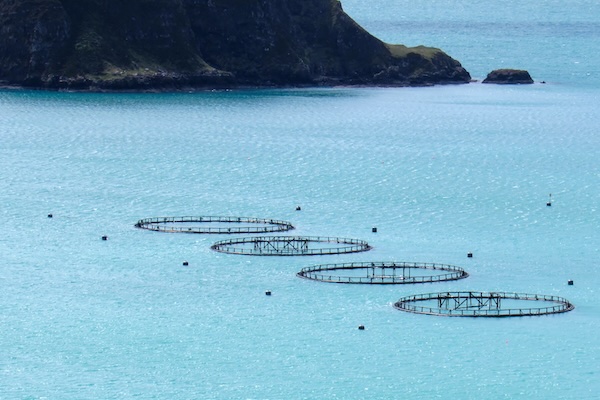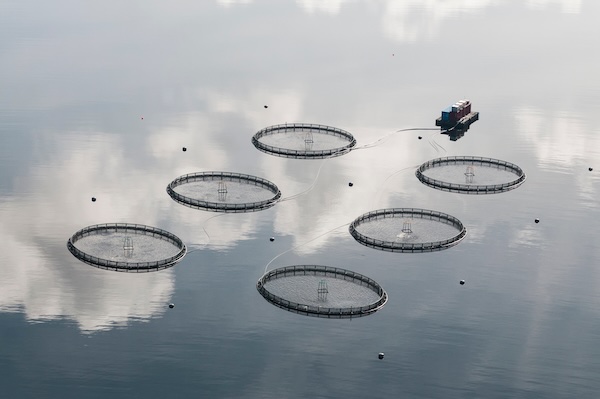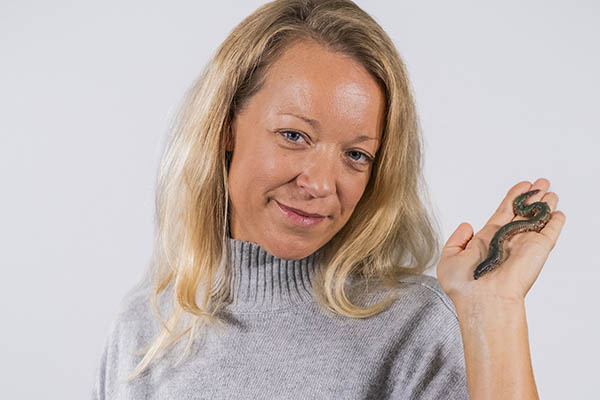New environmental DNA method offers faster, cheaper seabed health monitoring, potentially transforming how salmon farms and regulators assess ecological impact

A new environmental DNA (eDNA) approach for monitoring seabed conditions around marine fish farms could transform how salmon producers and the Scottish Environment Protection Agency (SEPA) assess ecological impact.
Traditionally, such monitoring involves days of sorting through samples to identify tiny seabed animals that indicate seabed health – a slow and costly process that could take up to three days per sample and cost the industry around £1 million (U.S. $1.3 million) each year. However, a faster and more cost-effective method is now available, using DNA techniques originally developed for human forensics to identify the organisms in sediment samples.
“At the moment, we sample the seabed followed by sieving and sorting sediment to identify species, but it is a time-consuming, labor-intensive process that hasn’t been updated for 30 years or so,” said Stephen Macintyre, head of environment at Mowi Scotland.“The DNA-based approach will enable us to understand our environmental performance much quicker, almost in real-time, and take action where required to improve the environmental picture.”
Using this approach, Scientists apply metabarcoding, a process that compares DNA from the samples with a sequence database, allowing them to identify thousands of bacterial species at once. After gathering a sample, the bacteria in the sediment are analyzed using DNA, and a machine-learning model predicts the health of the invertebrate community based on the bacteria. The health of this community is then classified using the Infaunal Quality Index (IQI), a well-established ecological benchmark.
“Environmental DNA is already widely used elsewhere for nature-based assessments and also has the potential to be applied to assess the wider marine biodiversity that exists around our fish farms,” said Macintyre. “The practical outputs from this project are very promising, and we are now in talks with SEPA about integrating DNA-based compliance assessments into our site monitoring program.”
Following an extensive six-year project, samples analyzed using the new method are now being presented to SEPA for validation, with an open-source toolkit and standard operating procedures also being created for anyone in the sector to use.
The research was supported by the Sustainable Aquaculture Innovation Centre (SAIC), Institute of Biodiversity and Freshwater Conservation at UHI Inverness, Mowi (Scotland), SEPA, University of Kaiserslautern in Germany, Scottish Sea Farms, Salmon Scotland and lead research partner, the Scottish Association for Marine Science (SAMS).
“This project has been years in the making and it is great to see the results of a long-term collaboration between the sector, academia and regulators having the potential to transform a key aspect of aquaculture monitoring,” said Sarah Riddle, director of innovation and engagement at SAIC. “E-DNA sampling could provide widespread benefits to both the aquaculture sector and its regulators, with potential for this approach to be adopted across the global by seafood-producing nations. Armed with data, producers can be better informed to make decisions around key environmental and fish health factors influenced by the seabed.”
Now that you've reached the end of the article ...
… please consider supporting GSA’s mission to advance responsible seafood practices through education, advocacy and third-party assurances. The Advocate aims to document the evolution of responsible seafood practices and share the expansive knowledge of our vast network of contributors.
By becoming a Global Seafood Alliance member, you’re ensuring that all of the pre-competitive work we do through member benefits, resources and events can continue. Individual membership costs just $50 a year.
Not a GSA member? Join us.
Author
Tagged With
Related Posts

Innovation & Investment
Aquaculture researchers secure funds to enhance fish health and welfare amid climate change
Three new aquaculture projects net $2 million in funding to improve fish health and welfare in response to climate change challenges.

Health & Welfare
Tool in development aims to improve sea lice predictions and fish health
A new tool is being developed to improve sea lice predictions and enhance fish health with more reliable, consistent data.

Health & Welfare
SAIC is funding fish health and welfare research initiatives
SAIC has awarded $1 million in R&D support to seven innovation projects focused on fish health and welfare.

Responsibility
Novel chemical-free approach could create a circular model for treating aquaculture waste
An initiative could open up a new avenue for seafood producers to deal with aquaculture waste in a more circular way.



